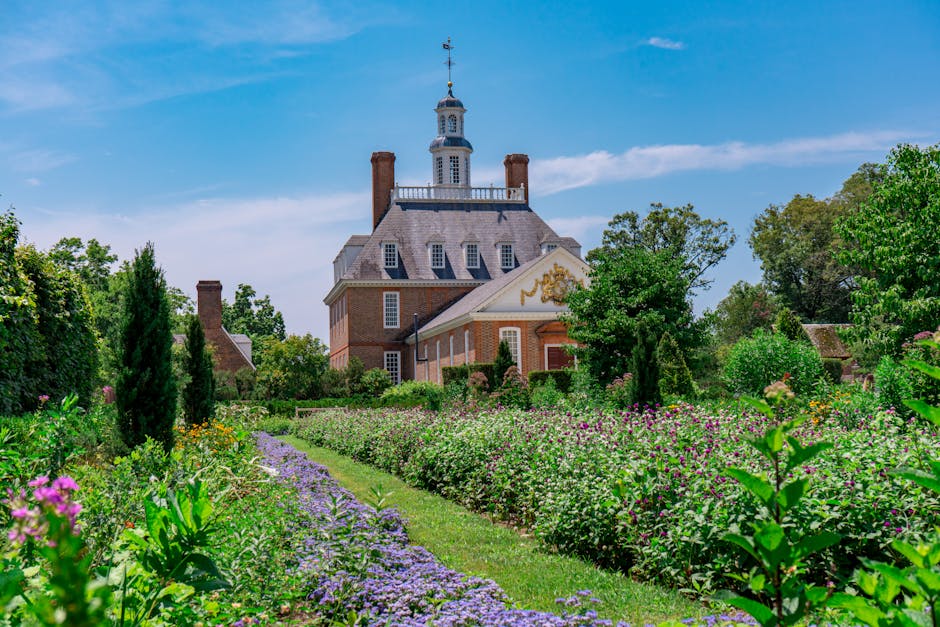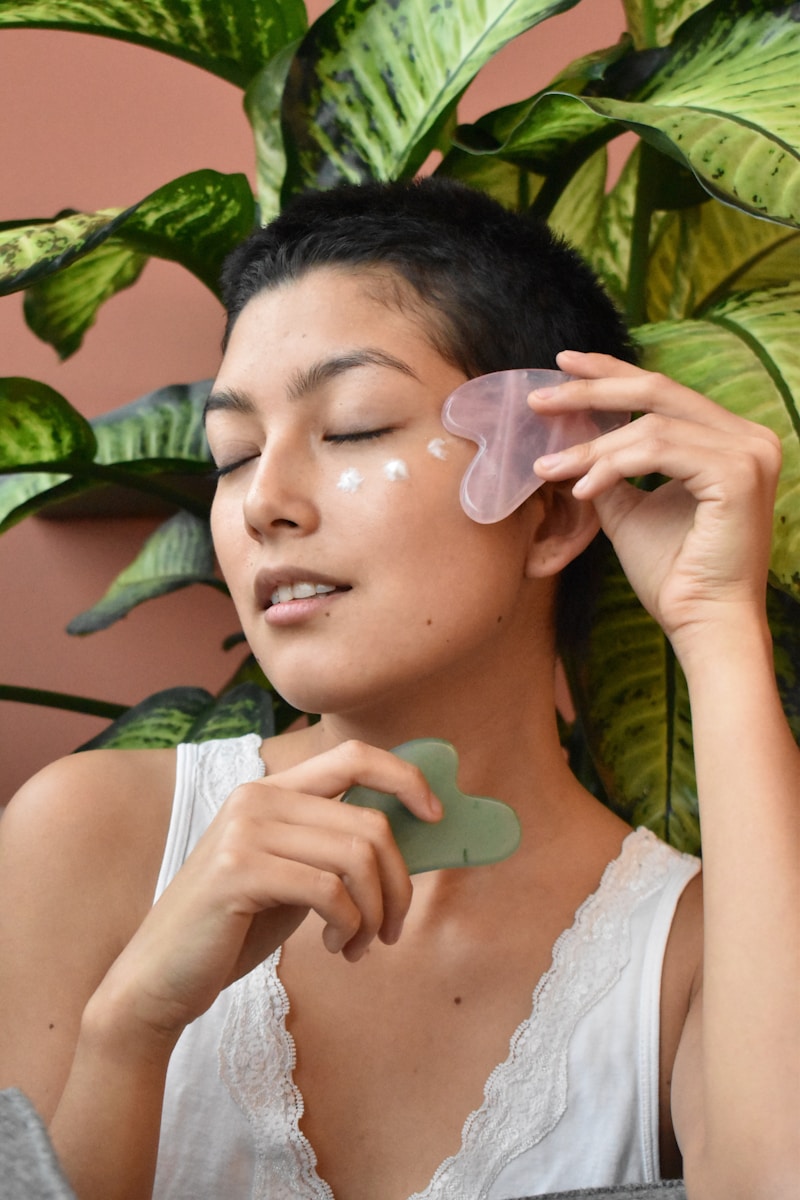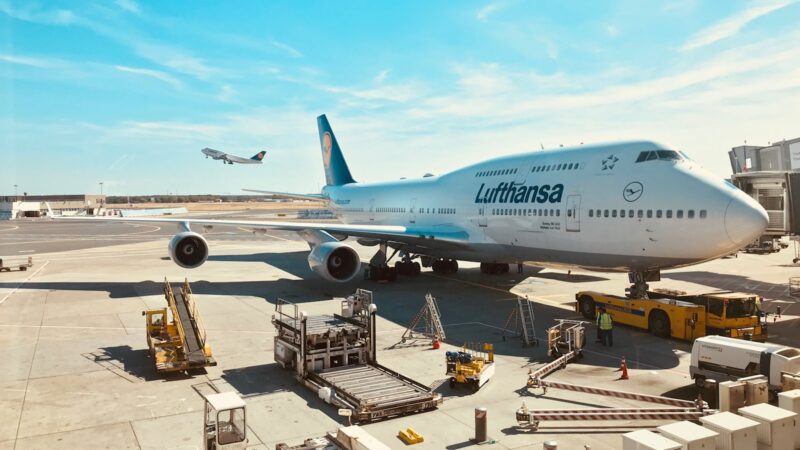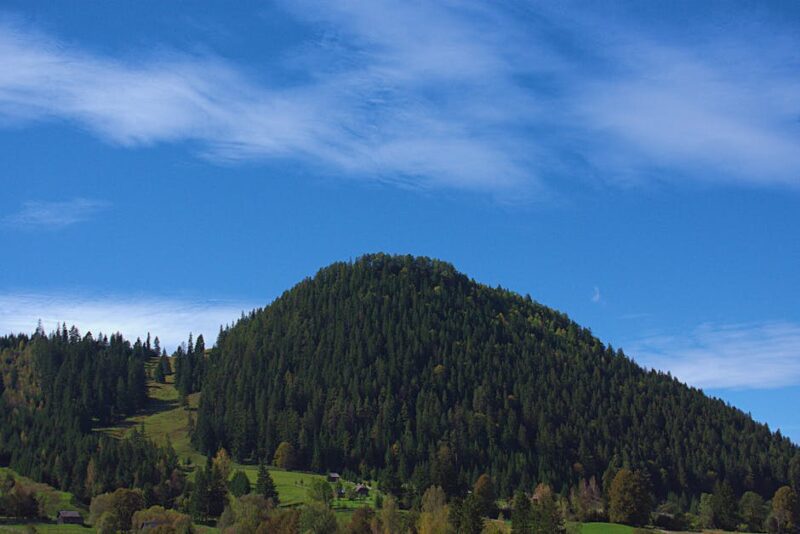Colonial Williamsburg travel guide is your key to open uping America’s past in Virginia’s largest living history museum. Centered around the historic Duke of Gloucester Street, this immersive 301-acre site offers a glimpse into 18th-century life with its 88 original structures and hundreds of historically reconstructed buildings. Visitors can roam the car-free streets, interact with costumed interpreters, and engage with sites that tell the stories of both patriots and enslaved people who lived here. Whether you’re planning a visit or simply curious, this overview provides the essentials of what makes Colonial Williamsburg a must-see for history enthusiasts.
Colonial Williamsburg serves as a tangible link to America’s formative years, providing insight into the struggle for independence and daily life of the era. Its preserved landmarks, like the iconic Capitol building and the Governor’s Palace, showcase colonial architecture and politics. Meanwhile, attractions like the Raleigh Tavern enrich our understanding of social life during the colonial period.
I’m Gabrielle Reese VT, a seasoned traveler and educator passionate about history and culture. With a wealth of experience traveling across the U.S. and insights from my blog, I’ve crafted this Colonial Williamsburg travel guide to help you explore and appreciate this unique historical site.
Table of Contents
TogglePlanning Your Visit
Visiting Colonial Williamsburg is like stepping into a time machine. With a bit of planning, you can make the most out of your visit. From admission tickets to special events, here’s everything you need to know.
Admission Tickets and Passes
Start by choosing the right ticket for your trip. Colonial Williamsburg offers single-day tickets, multiday tickets, and annual passes. Each option provides access to a variety of sites and activities.
- Single-day tickets are perfect for a quick visit. They give you access to all open sites for one day.
- Multiday tickets are ideal if you plan to explore over several days. They offer flexibility and a deeper dive into history.
- Annual passes are great for history buffs who plan to visit multiple times a year.
Once you purchase your tickets, you’ll receive them via email. You can also view them online by creating a Colonial Williamsburg account. If plans change, remember you can get a refund by canceling at least 72 hours in advance.
Suggested Itineraries
To make the most of your visit, consider a two-day itinerary. This allows you to explore historical buildings, enjoy dining, and shop at Merchants Square.
Day 1: Focus on the iconic historical sites. Start with the Capitol building and Governor’s Palace to understand colonial politics and governance. Take a break for lunch at one of the historic taverns, then continue to the Bruton Parish Church and Raleigh Tavern for a taste of colonial social life.
Day 2: Dive into the busy life of Duke of Gloucester Street. Visit the craftsmen and merchant shops, then explore nearby attractions like the William & Mary campus. Don’t miss dining at modern restaurants in Merchants Square.
Special Events
Colonial Williamsburg is alive with seasonal activities and evening programs. One of the highlights is the Grand Illumination. This event, steeped in tradition, features fireworks and a Yule Log procession.
During the Grand Illumination, enjoy music from the Fifes and Drums and musket fire from reenactors. The Yule Log procession is a torch-lit march that ends with a bonfire where visitors can throw greenery sprigs into the fire and make a wish.
Make your dining reservations early, especially during special events. Parking is available at the Visitor Center, with complimentary bus service to key locations throughout the Historic Area. If you’re flying in, there are three airports within a 50-minute drive, making it convenient to reach this historical gem.
With these tips, your Colonial Williamsburg travel guide will ensure a memorable journey into America’s past.
Must-See Historical Buildings
Colonial Williamsburg is a treasure trove of history, with each building telling its own unique story. Here’s a guide to the must-see historical buildings that you shouldn’t miss.
Capitol Building
The Capitol Building is a cornerstone of Colonial Williamsburg. Originally completed in 1705, this two-story H-shaped structure was the hub of Virginia’s colonial government. Here, the Council and the House of Burgesses convened, debating issues that would eventually lead to the American Revolution.
Today, a faithful replica stands on the original site, offering guided tours that start in the General Courtroom. Visitors can admire the stunning woodwork and original 1735 Speaker’s chair. The second floor hosts the Council and Conference Rooms, showcasing the building’s historical significance.
Governor’s Palace
The Governor’s Palace is a testament to colonial grandeur. Built in 1714, it served as the residence for Virginia’s royal governors. Its design was meant to impress, with lavish interiors and formal gardens that still captivate visitors today.
After the Revolutionary War, the Palace housed Virginia’s first elected governors, including Patrick Henry and Thomas Jefferson. A fire in 1781 destroyed the original building, but the 1930s reconstruction allows visitors to experience its former glory. Tours lead through ornately decorated rooms and exit into the breathtaking gardens, perfect for a leisurely stroll.
Bruton Parish Church
The Bruton Parish Church, completed in 1715, is one of the oldest structures in Williamsburg. Its restoration in 1907 was pivotal in convincing philanthropist John D. Rockefeller, Jr. to fund Williamsburg’s broader restoration.
Visitors can explore the church and its graveyard, which holds the remains of Martha Washington’s children. If you can, attend an evening candlelight concert here. The combination of period instruments and historic surroundings creates an unforgettable ambiance.
Raleigh Tavern
The Raleigh Tavern was more than just a place to eat and drink. It was a key social hub where ideas flowed as freely as the ale. Inside, you can tour rooms that include a billiard table from 1738 and a large kitchen out back.
A visit isn’t complete without trying the famous gingerbread cookies. Baked in the traditional beehive oven, their aroma fills the air, offering a delicious taste of history.
Duke of Gloucester Street
Walking along Duke of Gloucester Street is like stepping back in time. This busy thoroughfare is lined with craftsmen, merchant shops, and historical sites. Look for colorful signs indicating the type of crafts practiced inside.
Stop by Market Square for unique purchases, or take a carriage ride to see the street as the colonists did. This vibrant street is alive with historical reenactments, making it a must-see on your visit.
Wren Building
The Wren Building at the College of William & Mary is the oldest college building in the United States. Built between 1695 and 1699, it predates the founding of Williamsburg itself.
A campus tour is highly recommended to appreciate not only the building’s historical significance but also the beauty of the surrounding 1,200-acre campus. The grounds feature ponds, bridges, and gardens, offering a serene setting steeped in history.
Colonial Williamsburg is a living museum where history comes alive through its carefully preserved and reconstructed buildings. Each site offers a glimpse into the past, providing a rich mix of American colonial life.
Experiencing Colonial Williamsburg
Craft Demonstrations
Colonial Williamsburg is a hub of traditional craftsmanship. Here, you can watch artisans at work, using 18th-century tools and methods. The blacksmith is a favorite stop, where you can see metal being shaped into tools and hardware. Nearby, the shoemaker crafts leather goods, offering a peek into the skills needed to make footwear in colonial times.
Don’t miss the milliner, who creates hats and garments, showcasing the fashion of the era. For a hands-on experience, visit the brickyard. Kids and adults alike can learn how bricks were made by hand, just as they were for the original Williamsburg buildings.
These demonstrations are not just educational; they’re a chance to connect with history in a tangible way. The artisans are happy to answer questions, making it a perfect learning opportunity for visitors of all ages.
Museums
Colonial Williamsburg is also home to two exceptional museums: the DeWitt Wallace Decorative Arts Museum and the Abby Aldrich Rockefeller Folk Art Museum. Both are must-sees for anyone interested in art and history.
The DeWitt Wallace Museum showcases beautifully crafted furniture, musical instruments, and textiles from the colonial period. It’s also where you’ll find the famous Charles Wilson Peale portrait of George Washington. Meanwhile, the Folk Art Museum offers a whimsical look at American folk art, with collections of toys, portraits, and weathervanes.
These museums provide a deeper understanding of the artistic and cultural heritage of Colonial Williamsburg, making them essential stops on your itinerary.
Dining Options
Dining in Colonial Williamsburg is an experience in itself. The Historic Taverns like Christina Campbell’s Tavern and King’s Arms Tavern serve dishes inspired by colonial recipes, prepared in modern kitchens but served with authentic flatware and goblets. Enjoy a meal of Peanut Soup or Brunswick Stew while minstrels entertain.
For a more modern dining experience, head to Merchants Square. This area offers a variety of restaurants that cater to contemporary tastes, providing something for everyone.
Whether you’re dining in a historic setting or a modern restaurant, the culinary options in Colonial Williamsburg are sure to please.
Lodging Options
Staying in Colonial Williamsburg offers a range of options. For an immersive experience, consider the Colonial Homes. These carefully reproduced spaces offer a glimpse into the past, complete with modern amenities. Staying here often includes an admission pass to the historic area.
For those seeking luxury, the Williamsburg Inn provides five-star accommodations. It’s a favorite among presidents and royalty, offering an neat stay. Alternatively, the Williamsburg Lodge, part of the Marriott Autograph Collection, provides a relaxing retreat close to the action.
Families might prefer the Williamsburg Woodlands, conveniently located next to the Visitor Center. The Griffin Hotel offers a more secluded option, surrounded by nature but outside the historic district.
Each lodging option provides a unique experience, ensuring your stay in Colonial Williamsburg is as memorable as the history you’ll explore.
Nearby Attractions
Colonial Williamsburg is just the beginning of your historical journey through Virginia. Nearby attractions offer a blend of history, adventure, and education. Here’s what you shouldn’t miss:
Jamestown
Historic Jamestowne is where it all began. This is the site of the first permanent English settlement in America. Explore excavations and learn about the settlers’ struggles and triumphs. Visit the Jamestown Settlement to see re-creations of a Powhatan Indian village and board replicas of the ships that brought the colonists to Virginia. An exhibit-filled gallery and a film, “1607: A Nation Takes Root,” provide a comprehensive look at this pivotal moment in history.
Yorktown
Yorktown is where the American Revolution found its turning point. Yorktown Battlefield is a National Park Service site where you can walk the grounds of the last major battle of the Revolutionary War. The American Revolution Museum at Yorktown offers interactive exhibits and a re-created Continental Army encampment. See how the lives of everyday people were changed forever by the fight for independence.
Busch Gardens and Water Country USA
For a change of pace, head to Busch Gardens. This theme park offers thrilling roller coasters and live shows for the whole family. Nearby, Water Country USA is Virginia’s largest water park, with over 25 water attractions. It’s the perfect place to cool off and have fun during the summer months.
William & Mary
Founded in 1693, the College of William & Mary is the second oldest college in America. The Wren Building, constructed between 1695 and 1699, is the oldest college building still in use in the United States. Take a stroll around the picturesque 1,200-acre campus, featuring ponds, bridges, and gardens. Don’t miss the Muscarelle Museum of Art, which houses a diverse collection of 4,000 works.
Colonial Parkway
Connecting Jamestown, Williamsburg, and Yorktown is the Colonial Parkway. This 23-mile scenic route offers breathtaking views of Virginia’s Historic Triangle. It’s a relaxing drive that ties together the stories of America’s early settlers, revolutionaries, and the birth of a nation.
These attractions make the Historic Triangle a rich mix of American history, culture, and adventure. Whether you’re exploring the past or enjoying modern thrills, there’s something for everyone near Colonial Williamsburg.
Frequently Asked Questions about Colonial Williamsburg
How much time do you need at Colonial Williamsburg?
For a full experience of Colonial Williamsburg, plan for at least two days. This allows you to explore the vast 301-acre historic area, which includes 88 original buildings and numerous reconstructed sites. With a multi-day ticket, you can take your time visiting key attractions like the Governor’s Palace and the Capitol building, without feeling rushed.
A multi-day ticket offers flexibility and access to various programs and events, making it a worthwhile investment for those interested in a deep dive into history.
Can I walk around Colonial Williamsburg for free?
Yes, you can enjoy free walking around some parts of Colonial Williamsburg. The charming Duke of Gloucester Street, for instance, is open to the public without an admission ticket. Here, you can stroll along the cobblestone paths, take in the historic ambiance, and even watch some outdoor demonstrations.
However, to enter most of the historic buildings and access special programs, you’ll need an admission ticket. Tickets can be purchased online or at various ticketing locations within Williamsburg.
What is the best time of year to visit Williamsburg, VA?
The best times to visit Williamsburg are during the autumn and spring months. During these seasons, the weather is typically mild and pleasant, making it ideal for walking and outdoor activities. The fall brings vibrant foliage, adding a picturesque backdrop to your historical trip. Spring, on the other hand, offers blooming gardens and comfortable temperatures.
Visiting during these times also means you can enjoy seasonal events and activities, enhancing your Colonial Williamsburg experience.
Conclusion
At Versed Traveler, we’re passionate about making your journeys as enriching and seamless as possible. Whether you’re planning a historical excursion to Colonial Williamsburg or exploring other destinations, our comprehensive travel information and tips are designed to help you make the most of your travels.
Colonial Williamsburg is a living mix of American history, and visiting it is like stepping back in time. With our Colonial Williamsburg travel guide, you have access to detailed itineraries, insider tips, and essential travel advice that will ensure your visit is both educational and enjoyable.
Travel Essentials are key to any successful trip. From planning your itinerary and securing tickets to finding the best dining and lodging options, we’ve got you covered. We recommend purchasing tickets in advance and considering a multi-day pass to fully immerse yourself in the historical experience.
Our guides also highlight special events like the Grand Illumination and seasonal activities, ensuring you don’t miss out on any of the unique experiences Colonial Williamsburg has to offer.
For those looking to explore beyond Williamsburg, nearby attractions such as Jamestown, Yorktown, and Busch Gardens provide additional trips.
Whether you’re traveling with family, friends, or solo, Versed Traveler is your one-stop source for detailed travel intel. From historical vacations to modern escapades, our resources are custom to meet the needs of every traveler.
Ready to explore more historical destinations? Check out our Europe travel guides for more inspiration and start planning your next trip today!












